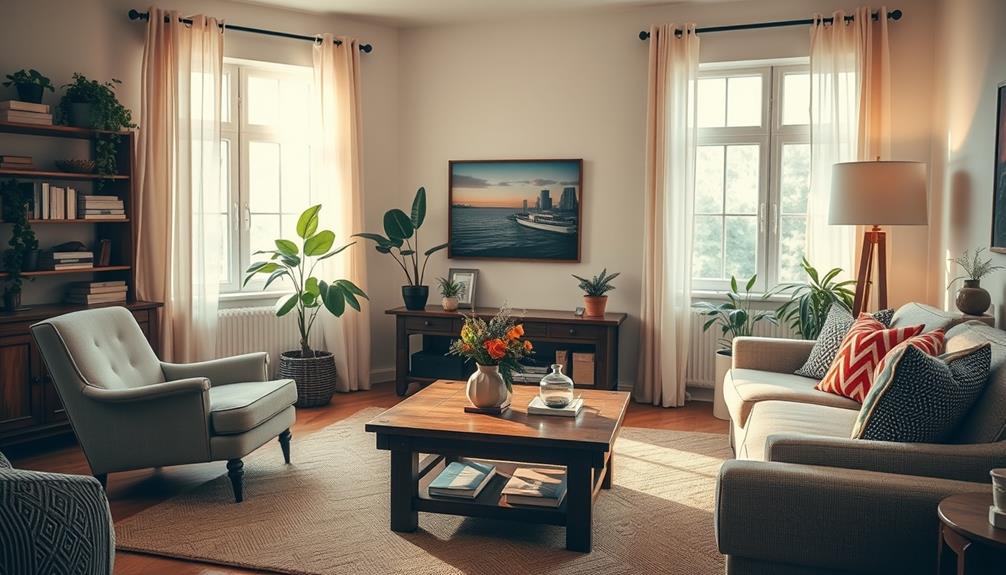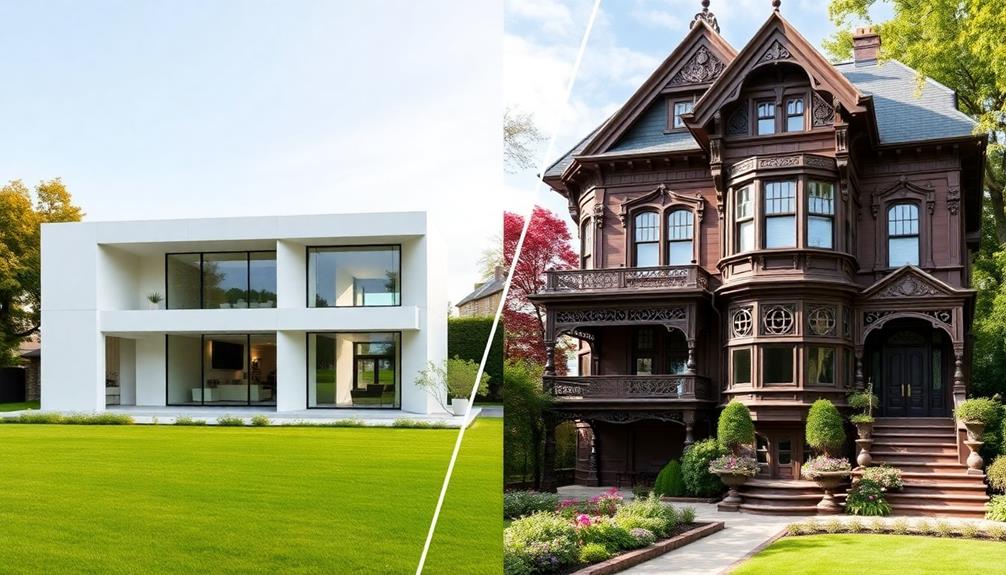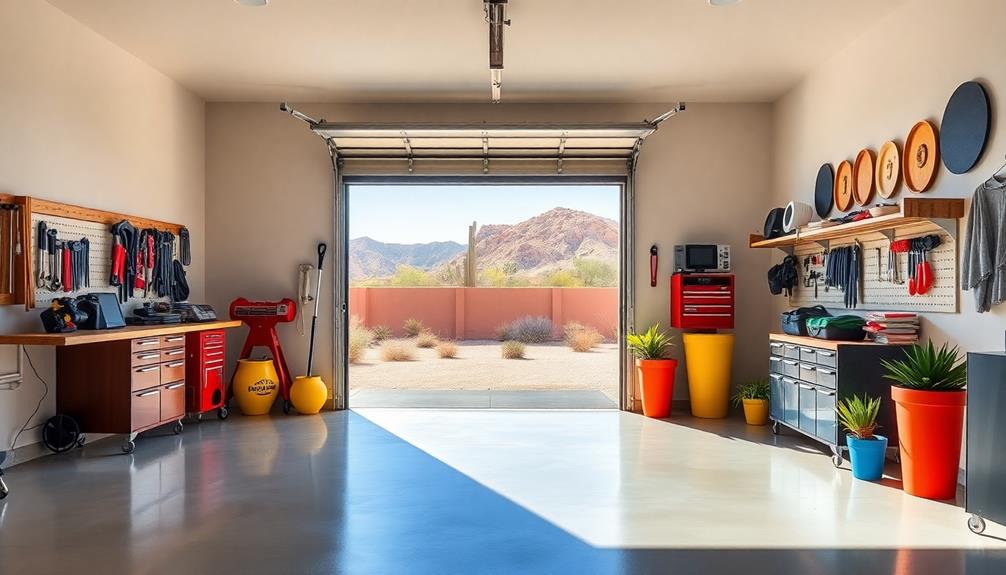To effectively sell used furniture, begin by ensuring items are clean and in good repair to increase their attractiveness. Provide accurate measurements and detailed descriptions of each piece’s condition and any imperfections. Opt for platforms such as Facebook Marketplace or Craigslist for local sales. Price your items competitively, usually between 30-40% of their original value. Use social media to showcase your items with high-quality images and compelling descriptions. Be ready for negotiations with buyers and remember that shipping costs can impact sales, so focus on local buyers. For more tips on streamlining your selling process, you can find helpful advice below. If you are selling vintage chairs or other unique items, consider targeting specific markets or using platforms like Etsy or Chairish. Highlight the unique features and history of each piece to attract collectors and enthusiasts. Lastly, remember to communicate promptly and professionally with potential buyers to ensure successful transactions.
Key Takeaways
- Clean and repair furniture to improve its appearance and appeal before listing it for sale.
- Accurately describe each item, including its condition, dimensions, and any flaws to inform potential buyers.
- Use online platforms like Facebook Marketplace and Craigslist for quick local sales without listing fees.
- Research market trends to set competitive prices, typically around 30-40% of the original cost.
- Consider donating or giving away items for quick turnover and to positively contribute to the community.
Preparation and Listing Essentials
When you're ready to sell your used furniture, proper preparation and listing are key to attracting buyers. Start by thoroughly cleaning each item. Vacuum, steam clean, dust, and shine surfaces to enhance their appearance. This will make your furniture more appealing and increase the chances of a successful furniture resale.
Additionally, consider the importance of maintaining clean surfaces to prevent any cross-contact issues if the furniture has been in a kitchen setting, which can impact buyer perception. Preventing cross-contact is vital for creating a trustworthy selling environment.
Next, accurately describe each piece in your listing. Include details about its age, brand, condition, and any flaws. Transparency helps potential buyers make informed decisions and builds trust.
Don't forget to measure and provide accurate dimensions, as this guarantees the furniture fits their space.
High-quality images are crucial, too. Capture your furniture in good lighting against decluttered backgrounds. This showcases the items effectively and draws in potential buyers.
If there's any visible damage, such as scratches or tears, repair them before listing. Patching up these flaws enhances the item's appeal and can lead to a quicker sale.
Selling Platforms Overview
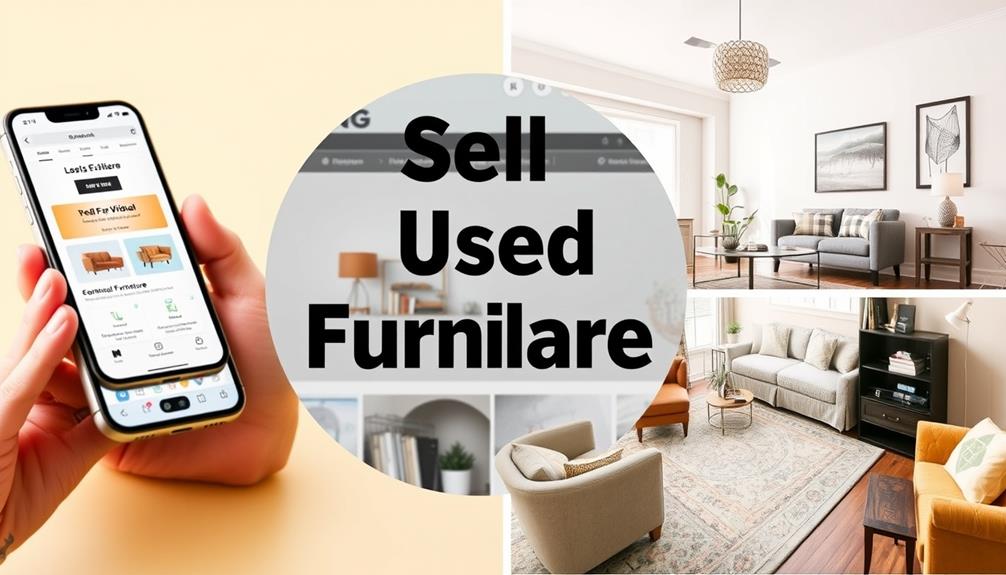
Several popular platforms exist for selling used furniture, each with its own strengths.
Facebook Marketplace is a top choice for quick sales, allowing you to sell furniture locally without any listing fees. The platform leverages buyer profiles, enhancing your visibility as a seller. Additionally, there are various best websites to earn money online that may include furniture-selling options.
On the other hand, Craigslist offers free listings, but it can be a bit hit or miss when it comes to buyer reliability and pricing expectations.
If you're looking to sell higher-end or designer pieces, Chairish specializes in curated furniture and offers better consignment payouts. This platform streamlines the listing process and connects you with a niche market that appreciates quality.
For those in NYC, NJ, and CT, AptDeco is another option that accepts a variety of items, including Ikea products. However, keep in mind that shipping costs can deter some potential buyers.
Pricing Strategies for Success
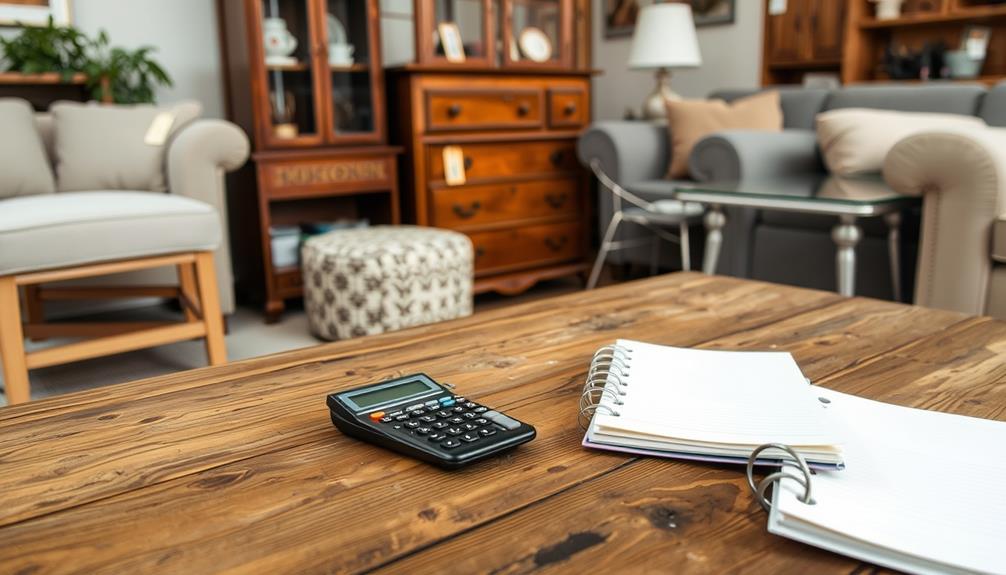
When pricing your used furniture, it's essential to research market trends and check similar listings to find a competitive edge.
Understanding the common financial terms related to selling can also help you set a price that reflects true value.
Assess the condition of your items, as this greatly impacts how much you can ask.
Research Market Trends
Understanding the furniture market's trends is essential for setting effective pricing strategies. When you're researching market trends, focus on how used furniture typically resells for about 30-40% of its original retail price, depending on its condition and demand.
To maximize appeal, analyze popular styles and colors that are currently in vogue. This way, your listings will align with buyer preferences.
Keep an eye on seasonal trends, too. Demand for furniture often spikes during moving seasons, presenting a great opportunity for higher sales potential. By timing your sales strategically, you can attract more buyers.
Utilize online platforms to track and compare similar listings, which will help you set competitive prices based on current market conditions.
Make sure to factor in the depreciation rate of your specific furniture type; solid wood items, for example, tend to retain value better than those made from other materials. This insight will further refine your pricing strategy and enhance your chances of selling successfully.
Assess Item Condition
Before pricing your used furniture, you need to evaluate its condition thoroughly. Check for scratches, wear, or structural issues that could affect its value. This step is essential to determine a fair price that helps you sell faster.
Consider the materials and age of each piece of furniture, as high-quality solid wood generally retains its value better than particleboard. Brand reputation also plays a role; well-known brands or vintage items may command higher prices despite some wear.
To assist you in this process, here's a quick reference table to help you gauge the item condition:
| Condition Level | Description |
|---|---|
| Like New | Minimal signs of use; looks almost brand new. |
| Good | Some wear and tear; no major defects. |
| Fair | Noticeable flaws; may require minor repairs. |
Being transparent about any defects in your listing builds trust with potential buyers, which can greatly help you sell faster. By accurately evaluating the item condition, you're setting yourself up for pricing success.
Competitive Pricing Strategies
After evaluating the condition of your used furniture, the next step is to implement competitive pricing strategies that attract buyers while guaranteeing you maximize your profit.
Start by researching similar listings on various platforms to gauge competitive pricing. Most used furniture typically resells for 30-40% of the original price, but remember, high-quality items like solid wood furniture may retain more value.
Here are some key points to reflect upon:
- Condition and Brand: High-quality items generally have better resale values.
- Minimum Auction Price: Set a price that reflects your lowest acceptable offer to avoid underselling.
- Seller Fees: Factor in any fees from the selling platform to guarantee you receive your intended profit.
- Flexibility: Be open to negotiation; many buyers expect to haggle, especially for higher-priced items.
- Market Trends: Keep an eye on seasonal trends or local demand that might affect pricing.
Marketing Your Furniture

To effectively market your used furniture, you'll want to leverage the power of social media and community platforms. Start by showcasing your items on Instagram and Facebook. Use high-quality images that capture your furniture in attractive settings; appealing visuals can notably boost buyer interest.
Write engaging descriptions that highlight unique features and benefits, making it easier for potential buyers to envision the pieces in their own homes.
Don't forget to tap into local community groups and forums where members are actively seeking used furniture. Promote your listings there, emphasizing local pick-up options to attract buyers who prefer to save on shipping costs.
To further enhance visibility, consider using relevant hashtags that relate to your furniture style and location. This will help potential buyers searching for similar items find your listings more easily.
Additionally, offering promotions like limited-time discounts or bundling items can encourage quick sales. This strategy not only helps you sell your furniture on eBay or other platforms, but also creates a sense of urgency for buyers.
Common Selling Challenges
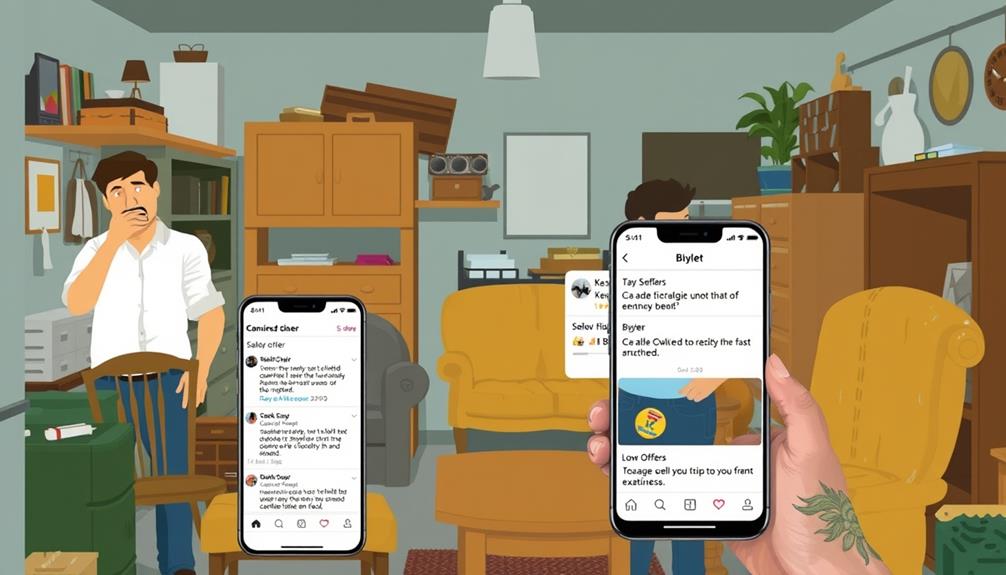
Successfully marketing your used furniture can help attract potential buyers, but selling these items comes with its own set of challenges. As a new seller, you might face several hurdles that can make the process frustrating.
Here are some common issues you may encounter:
- Depreciation: Used furniture often sells for only 30-40% of its original price, making it tough to price items right.
- High prices: Buyers may hesitate on pricier furniture items, expecting discounts compared to new furniture.
- Shipping costs: Heavy items can lead to high shipping fees, pushing buyers towards local options instead.
- Market saturation: If your furniture is common or mass-produced, you might experience longer selling times and lower offers.
- Online navigation: First-time sellers often struggle with platforms, dealing with payment holds or competing visibility.
Understanding these challenges will help you strategize your selling approach.
Alternatives to Selling
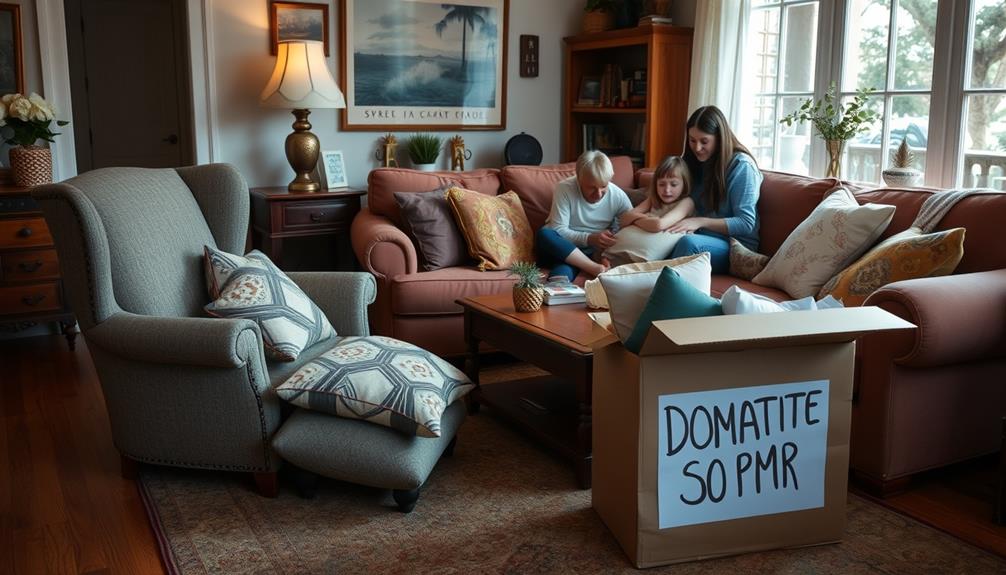
When you find yourself with used furniture that isn't selling, consider exploring alternatives to selling that can benefit both you and others.
Donating furniture to local charities, like Habitat for Humanity, supports those in need and might even offer you tax deduction benefits. Organizations such as Goodwill and Salvation Army often provide free pickup services, making it easy to declutter without the hassle of transportation. Additionally, many charities will even offer to schedule a pickup at your convenience, allowing you to coordinate the donation process seamlessly. When considering how to give back, it’s important to understand the donating furniture to Goodwill steps, which typically involve sorting through your items, ensuring they are in good condition, and contacting your local Goodwill for pickup arrangements. By taking this initiative, you not only contribute to your community but also promote a more sustainable lifestyle by giving your furniture a second life.
If you prefer a quicker turnover, think about giving away your furniture through platforms like Craigslist or Facebook Marketplace. This approach eliminates the stress of pricing and negotiation, enabling you to find new homes for your items swiftly.
Additionally, you can list unsold items for free on local community sites like NextDoor. This can connect you with neighbors who may be interested in your furniture, fostering a sense of community while helping you clear space.
Lastly, don't forget about animal shelters—they often accept clean linens and blankets, which can greatly contribute to the welfare of animals in need.
Exploring these alternatives not only helps you but also makes a positive impact on your local community.
Frequently Asked Questions
How Do You Determine the Resale Value of Used Furniture?
To determine the resale value of your used furniture, research similar items on platforms like Craigslist and Facebook Marketplace. Consider its condition, brand reputation, and seasonal demand to set a competitive and fair price.
How Much Money Can You Make Selling Used Furniture?
You could earn several hundred dollars monthly by selling used furniture. Some sellers even report making thousands annually. The right pieces, especially high-quality ones, can greatly boost your income while decluttering your space.
Does Amazon Buy Used Furniture?
No, Amazon doesn't buy used furniture. Instead, it focuses on new items and offers a marketplace for third-party sellers. For selling used furniture, you should consider platforms like Craigslist or Facebook Marketplace instead.
Is It Profitable to Sell Furniture?
You've hit the jackpot if you've got quality furniture! Selling it can be profitable, especially if it's in good condition. Just remember, market demand and pricing play essential roles in maximizing your earnings.
Conclusion
In the end, selling your used furniture can be a breeze if you follow the right steps. By prepping your items, choosing the best platforms, and pricing them wisely, you'll attract buyers faster than a dial-up modem connects to the internet! Don't shy away from marketing and tackling challenges head-on. If selling doesn't pan out, you've always got the option to donate or recycle. Remember, it's all about giving your furniture a second chance!
